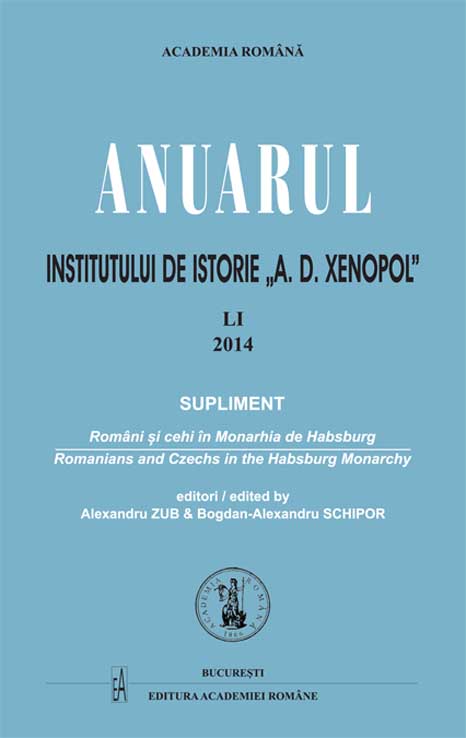MINORITIES’ SITUATION DURING THE HABSBURG MONARCHY AND ROMANIA AT THE END OF THE 19th CENTURY AND THE BEGINNING OF THE 20th CENTURY
MINORITIES’ SITUATION DURING THE HABSBURGS MONARCHY AND ROMANIA AT THE END OF THE 19th CENTURY AND THE BEGINNING OF THE 20th CENTURY
Author(s): Cătălin TurliucSubject(s): History, Jewish studies
Published by: Editura Academiei Române
Keywords: Habsburg Monarchy; nationalities; minorities; Jews; moder-nization; anti-semitism
Summary/Abstract: Any historical analysis of the nationalities’ statute (minorities or ethnical groups, using nowadays terminology) has to be calibrated using other methods derived from paradigms that are specific to the investigated chronotopic sequence. Within the context of the study I have carried on, that is the comparison between the statute of the nationalities in Romania and Austria-Hungary, I have considered to be as relevant elements specific to two main processes: modernization and democratization. Therefore, my intervention has as purpose a comparison in the classic sense and will use as support – in some cases – the situation of an ethnic group that is well represented within both state entities – the Jews. In fact, a collateral beneficiary of the system established by dualism on the 17th of February 1867 was represented by the large masses of Jews, which were politically and socially emancipated as a result of this evolution. Thus, by the 1867 17th Law, Jewish population in Hungary received equal politic and civil rights. The Jews will be assimilated – that is magyarized – rapidly and massively and, moreover, in some provinces like Transylvania, they will become the leaders of the magyarization policy of other nationalities. Jews were the most active supporters of the “assimilation” and brought brilliance in art and literature for the rulers of that time. Of course, Jews and their elites must not be blamed for the position they had, which was no more than gratitude towards the rulers of the times and a natural reflex for taking advantage of a historic opportunity and of a political context. Still, they will suffer as a result of anti-Semitism that will strongly develop for the whole analyzed period. As far as Romania is concerned, modernization was equivalent to westernization and that is why the communication and the social mobilization, the assimilationism manifested as important elements by the end of the 19th century and, especially, in the beginning of the 20th century. The juridical statute of our nationalities has a tight connection with the society’s general level of development, with its route towards modernization and democratization. The formula implemented by the 7th article of the 1866 Constitution (with the restrictive stipulation for non-Christians) is the result of respecting a long legislative tradition, the result of the moment conditioned at the time by the processes of consolidation, organization, centralization and institutionalization of the Romanian national statute and of the affirmation of its need for an independence that wouldn’t be altered by external pressure. Thus, the juridical problem of nationalities focused on Mohammedans and, especially, on Jews. Not having the citizenship had prohibited some Jews from occupying public functions and having jobs controlled exclusively by the state (the legislation was elaborated in this respect, similar, regarding foreigners, to the ones in other states of the civilized world). The modification of the Constitution, in 1879 established the modern principle of individual naturalization. Unfortunately, the nationalization pace wasn’t constant. The restrictions related to civil rights, resulted from our legislation that was adopted after the independence haven’t exclusively affected the nationalities (especially the Jews) but also most of the Romanian people, the peasants, excluded from the common rights by the legislation on the agricultural agreements. This is far from a justification that would explain certain restrictions, but it proves the degree of modernization and democratization reached by our society at the moment.
Journal: Anuarul Institutului de Istorie »A.D. Xenopol« - Iaşi
- Issue Year: LI/2014
- Issue No: Supl. 3
- Page Range: 81-94
- Page Count: 14
- Language: English

